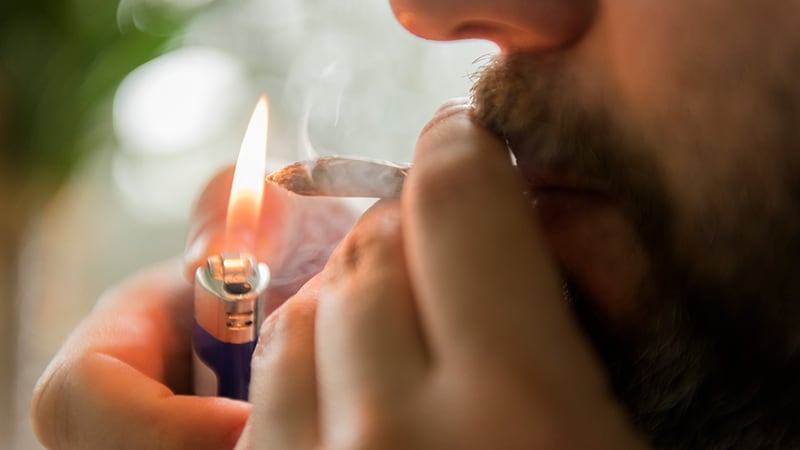
Scans of the lungs of pot users have turned up an alarming surprise: Regular smokers of marijuana appear to be at greater risk for lung damage than are people who smoke tobacco alone.

Dr Giselle Revah
“There’s a public perception that marijuana is safe,” said Giselle Revah, MD, a radiologist at the University of Ottawa, Ontario, Canada. “This study is raising concern that this might not be true.”
Revah said she can often tell immediately if a CT scan is from a heavy or long-time cigarette smoker. But with the legalization and increased use of marijuana in Canada and many US states, she began to wonder what cannabis use does to the lungs and whether she would be able to differentiate its effects from those of cigarette smoking.
She and her colleagues retrospectively examined chest CT scans from 56 marijuana smokers and compared them to scans of 57 nonsmokers and 33 users of tobacco alone.
Emphysema was significantly more common among marijuana smokers (75%) than among nonsmokers (5%). When matched for age and sex, 93% of marijuana smokers had emphysema, vs 67% of those who smoked tobacco only (P = .009).
Without age matching, rates of emphysema remained slightly higher among the marijuana users (75% vs 67%), although the difference was no longer statistically significant. Yet more than 40% of the marijuana group was younger than 50 years, and all of the tobacco-only users were 50 or older ― meaning that marijuana smokers may develop lung damage earlier or with less exposure, Revah said.
Revah added that her colleagues in family medicine have said the findings match their clinical experience. “In their practices, they have younger patients with emphysema,” she said.
Marijuana smokers also showed higher rates of airway inflammation, including bronchial thickening, bronchiectasis, and mucoid impaction, with and without sex- and age-matching, the researchers found.
The findings are “not even a little bit surprising,” according to Alan Kaplan, MD, a family physician in Ontario who has expertise in respiratory health. He is the author of a 2021 review on cannabis and lung health.
In an editorial accompanying the journal article, pulmonary experts note that the new data give context to a recent uptick in referrals for nontraumatic pneumothorax. The authors say they have received 22 of these referrals during the past 2 years but that they had received only six between 2012 and 2020. “Many, but not all, of these patients have a documented history of marijuana use,” they write.
One reason for the additional damage may be the way marijuana is inhaled, Kaplan said. Marijuana smokers “take a big breath in, and they really push it into lungs and hold pressure on it, which may actually cause alveoli to distend over time.”
Because most marijuana smokers in the study also smoked cigarettes, whether the observed damage was caused by marijuana alone or occurred through a synergy with tobacco is impossible to discern, Revah said.
Still, the results are striking, she said, because the marijuana group was compared to tobacco users who had an extensive smoking history ― 25 to 100 pack-years ― and who were from a high-risk lung cancer screening program.
Revah and her colleagues are now conducting a larger, prospective study to see whether they can confirm their findings.
“The message to physicians is to ask about cannabis smoking,” Kaplan said. In the past, people have been reluctant to admit using cannabis. Even with legalization, they may be slow to tell their physicians. But clinicians should still try to identify frequent users, especially those who are predisposed for lung conditions. If they intend to use the drug, the advice should be, “There are safer ways to use cannabis,” he said.
Revah and Kaplan have disclosed no relevant financial relationships.
Radiology. Published online 15, 2022. Full text, Editorial
Donavyn Coffey is a Kentucky-based journalist reporting on healthcare, the environment, and anything that affects the way we eat. She has a master’s degree from NYU’s Arthur L. Carter Journalism Institute and a master’s in molecular nutrition from Aarhus University in Denmark. You can see more of her work in Wired, Scientific American, Popular Science, and elsewhere.
For more news, follow Medscape on Facebook, Twitter, Instagram, and YouTube.
Source: Read Full Article